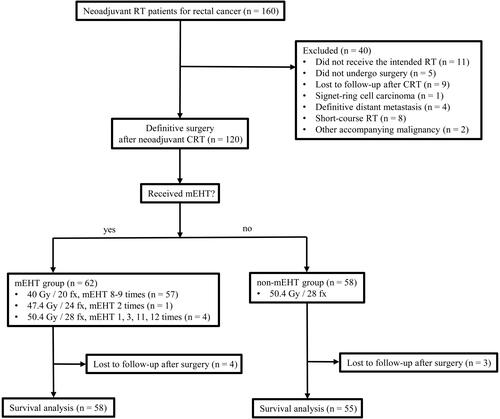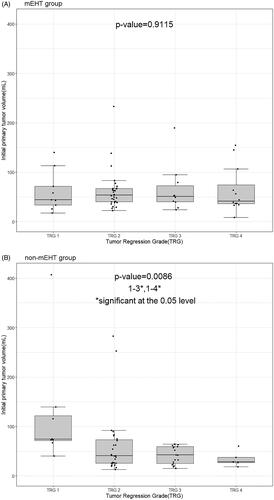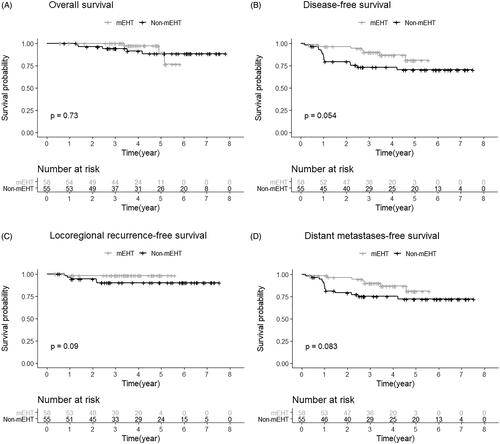Figures & data
Figure 1. CONSORT diagram (RT: radiotherapy; CRT: chemoradiotherapy; mEHT: modulated electro-hyperthermia; fx: fractions).

Table 1. Patient characteristics before neoadjuvant treatment.
Table 2. Neoadjuvant treatment summary.
Figure 2. Box plot with scatter plot between initial primary tumor volume and tumor regression grade (TRG) in mEHT group (A) and non-mEHT group (B). In mEHT group, TRG distribution according to the initial primary tumor volume was relatively uniform. In non-mEHT group, the larger the tumor volume, the lower the TRG as expected, which was found to have a relatively higher distribution of the tumor volume in TRG1 compared to TRG3 or TRG4.

Table 3. Surgical pathology results.
Table 4. Neoadjuvant treatment-related toxicities.
Figure 3. Survival analysis between the mEHT group and the non-mEHT group. (A) Overall survival, (B) Disease-free survival, (C) Locoregional recurrence-free survival, and (D) Distant metastasis-free survival.

Table 5. Univariate and multivariate Cox analysis of OS, DFS, LRRFS and DMFS for patients.
